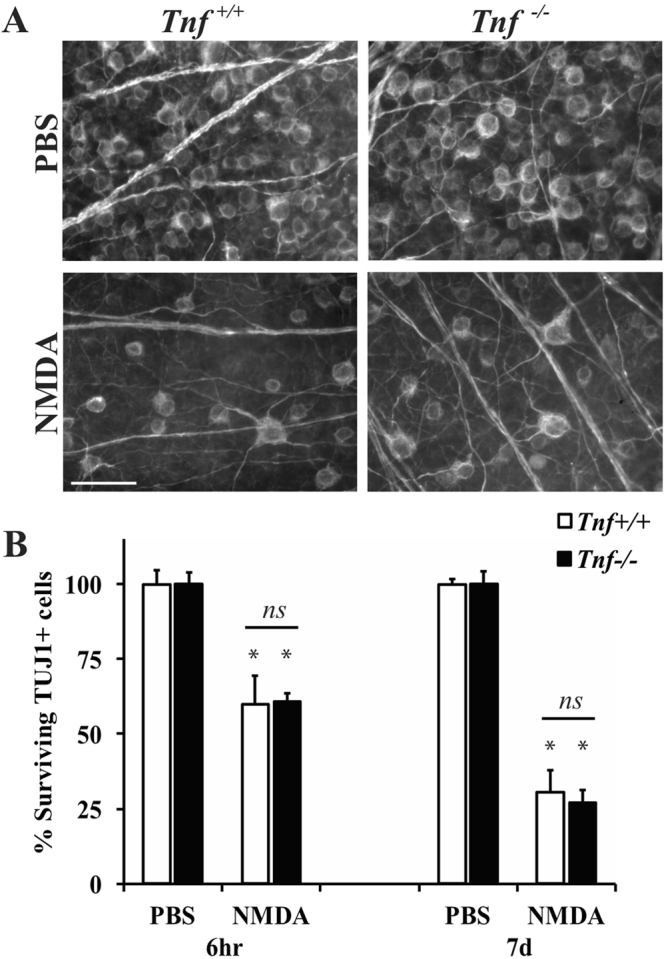Figure 2.

Tnf deficiency does not prevent RGC death after excitotoxic insult. To determine if TNF is required for NMDA induced RGC death, 2 μl PBS or 20 mM NMDA was injected into the vitreous of wildtype (Tnf+/+) and Tnf deficient (Tnf−/−) mice. The number of surviving RGCs (TUJ1 + cells) were counted 6 hours (hr) and 7 days (d) after intravitreal NMDA injection (n = 5 for 6 hr PBS Tnf+/+, n = 5 for 6 hr NMDA Tnf+/+, n = 5 for 6hr PBS Tnf−/−, n = 5 for 6hr NMDA Tnf−/−, n = 6 for 7d PBS Tnf+/+, n = 7 for 7d NMDA Tnf+/+, n = 5 for 7d PBS Tnf−/−, n = 5 for 7d NMDA Tnf−/−). (A) Representative images from flat mounted retinas stained with anti-TUJ1 show clear RGC loss in both wildtype and Tnf deficient mice after NMDA insult at both time points examined. (B) Quantification of TUJ1+ RGCs showed a significant loss of TUJ1 + cells in both wildtype and Tnf deficient mice at both 6 hours and 7 days after injury (*p < 0.001 for PBS to NMDA comparisons, P = 0.9694 comparing WT to Tnf−/− NMDA). Note, there was no difference in RGC number between Tnf wildtype and deficient mice at either time (p > 0.9 for each time point). Scale bar: 50 μm.
